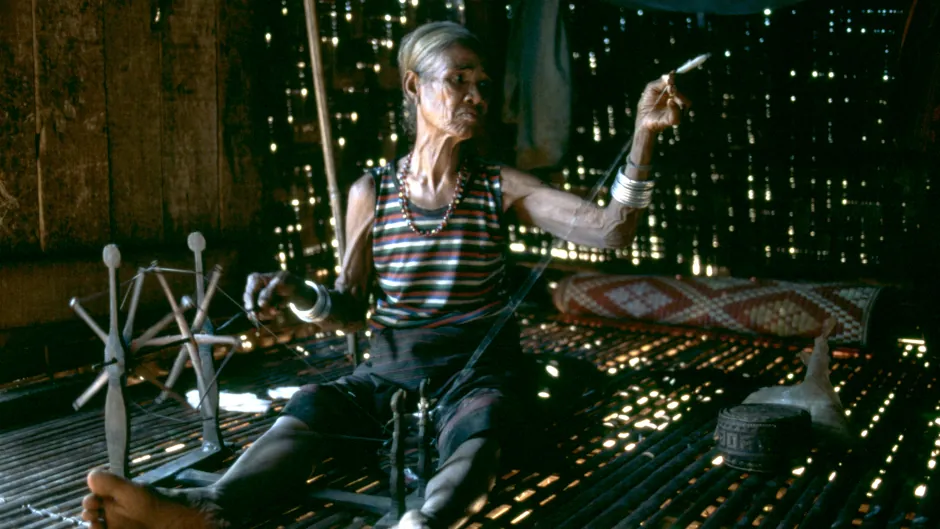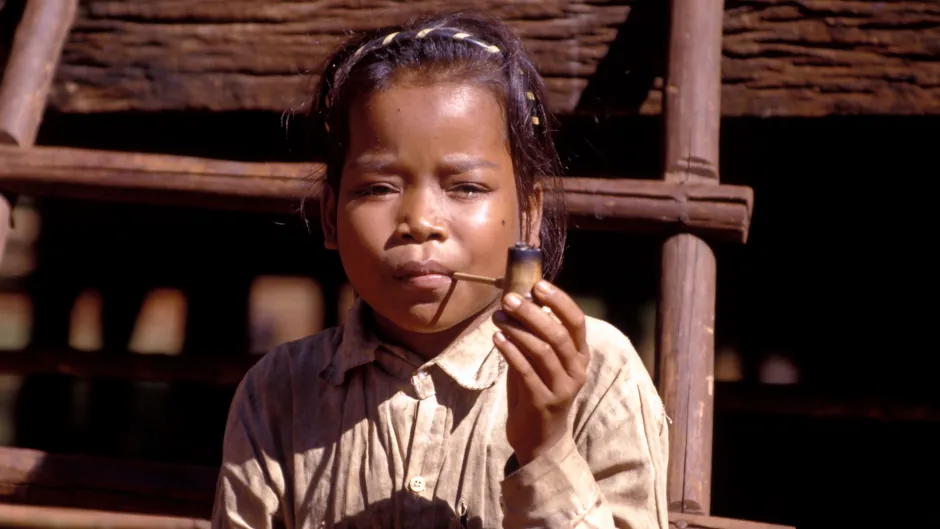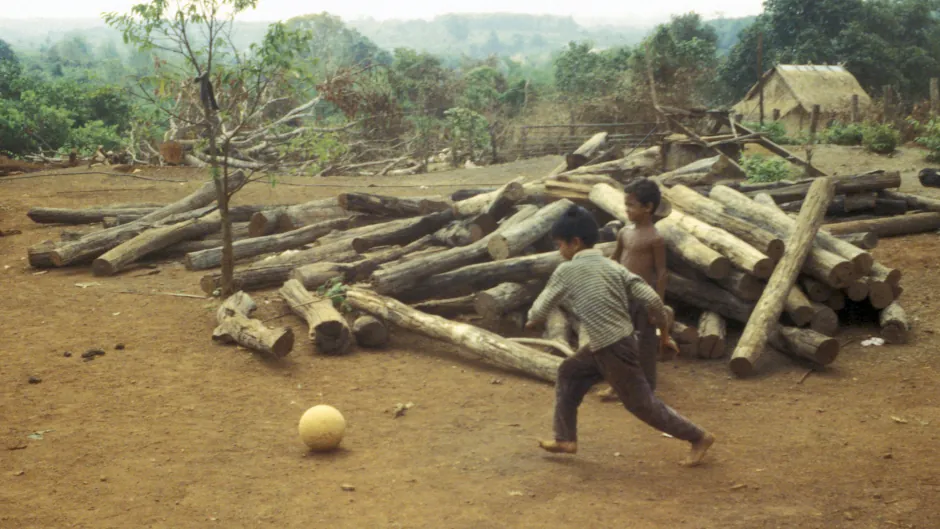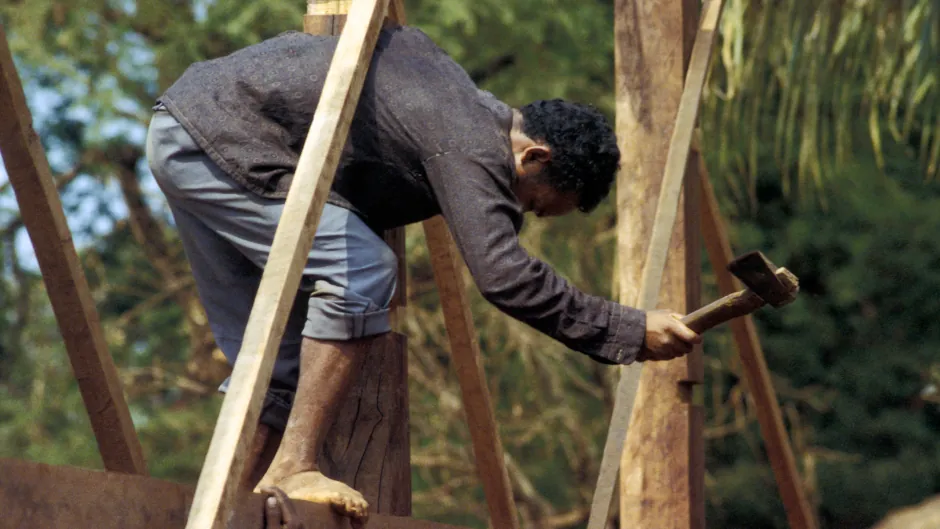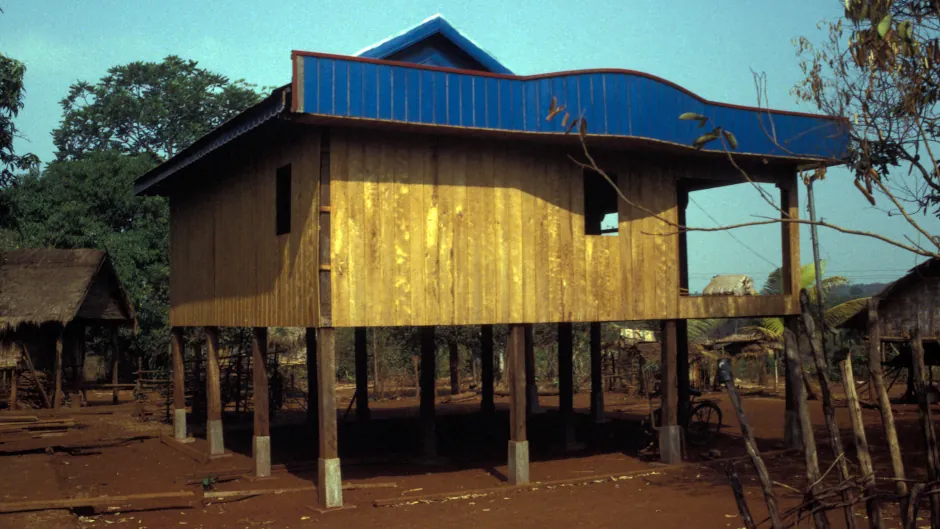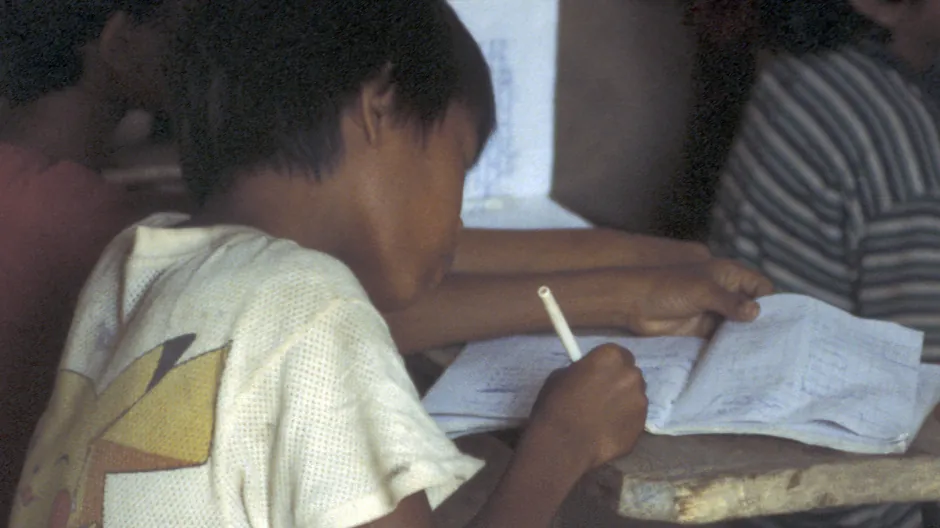The Indigenous Kreung People
Ethnonyms: Krung Countries inhabited: Cambodia, Lao PDR Language family: Austroasiatic Language branch: Mon-Khmer
There are around 25,000 indigenous Kreung people in Cambodia and perhaps a few hundred in Laos. In Cambodia they live mainly in the northeastern part bordering Laos and Vietnam. Until recently it was not easy to reach this area. When I first visited twenty years ago, all the roads in the region were dirt roads. Public transport did not exist. Unless you flew in on a small plane, reaching the provincial capital, Ban Lung, could take days.
That's all changed in the last few years. The airport has been abandoned and the roads are all paved. Once a predominantly indigenous region, Khmer people have recently begun moving into the area. That has also meant that indigenous groups like the Kreung have had more exposure to outside and mainstream influences.
The net effect has been a dramatic loss of many aspects of indigenous Kreung knowledge and culture. The elderly Kreung lady pictured above was likely one of the last to weave her own yarn. And the young girl pictured below is unlikely to find any Kreung children smoking a pipe these days.
One part of Kreung culture that was already beginning to disappear twenty years ago also affected this girl. When girls like her from the previous generation were approaching their teenage years, their parents would plan to build a "love hut" for them. This was a small wooden hut in which the girl would live from the onset of puberty. The event marked an announcement to teenaged boys in her village that she was now looking for a husband. She would remain in the hut and be visited (possibly overnight) by potential husbands until she chose one (the Kreung are monogamous). Girls who began living in these huts had full control over their relationships. They decided which boys would be allowed to visit them as well as the degree of intimacy involved. Boys would respect this female empowerment. This tradition has now almost vanished from Kreung society.
Otherwise, this girl's village (pictured below) looked much the same as other Kreung villages I visited. One striking difference, though, is the TV antenna towering above the houses. Although electricity is now more common in such villages (running water still isn't), any TVs back then would have been battery powered. TV itself would have been a novelty to the villagers. All the houses were small and basic with wooden frames, bamboo lattice walls and thatched roofs. They were raised perhaps a meter off the ground on wooden stilts. This is also the norm today in most Kreung villages.
A traditional Kreung skill that is unlikely to vanish any time soon, then, is that of thatching. The man pictured below is a thatcher. I was impressed by the speed at which he worked — especially considering that he only used basic hand tools. He tried to give me a quick lesson, but his skill was well beyond my grasp. Nor would I likely have been successful trying to be any other kind of Kreung such as a bamboo flute maker.
Life among the Kreung is still dominated by farming and raising (mainly small) livestock. Rice is, predictably, the main crop just as it is almost everywhere in this part of the world. An assortment of vegetables and tropical fruit are also grown. Each family in a village has a plot of land for farming. That land could be far from the village, so each morning those old enough to work may have to walk for a few hours just to begin their work for the day.
The Kreung are historically an Animist people. They worship various spirits that are associated with different important events. The most important spirits — such as the spirit of the harvest — are venerated in elaborate rituals. While this religious practice is also changing, it is still common to witness Animism in daily Kreung life. The family pictured below were eating a simple meal. Yet rice wine was also being drunk not for intoxication but to give thanks to the spirits for the food.
One thing the Kreung have in common with almost every other people in the world whose lives are modernizing, is a love of football (soccer). It was a school day when I photographed the two Kreung boys below. As soon as their school let out for recess, they immediately found a ball and were playing, seemingly oblivious to anything else that might be happening in their village.
There was a lot happening in their village. A few new houses were all at the beginning stages of construction. These were to be modern, "Khmer-style" houses. Gone are the thatched roofs, corrugated concrete being preferred instead. Timber framing is still used, which is why we see logs on the ground where the boys were playing football. Wooden planks replace lattice bamboo walls and are cut to introduce windows. Nails replace plant ties. Yet the construction is still undertaken using only hand tools.
The final result of this modern Kreung construction is shown in the photo below.
Interesting as it was to observe these and other changes in this village, that was not my main reason for returning there. Instead I was visiting to observe modernization of an entirely different kind. At the time of my first visit to this part of the world, Kreung and most of Cambodia's indigenous languages were still in their pre-literacy era: No writing system had ever been devised for those languages. I had learned of a program to establish writing for the Kreung language, but I had seen no details. The school in this remote village was the first in the world to use this new writing system — albeit experimentally.
Until that day I had seen very few books or pens in the hands of Cambodia's indigenous students. But on my visit every student had a book and a pen because they could write for the first time in their own language. (Our short documentary film about indigenous literacy in Cambodia is linked at the bottom of this page.)
Kreung life and culture are changing as rapidly as they are for any other of the world's indigenous people. But literacy is, by far, the single biggest change they have ever experienced.
Photography copyright © 1999 - 2025, Ray Waddington. All rights reserved. Text copyright © 1999 - 2025, The Peoples of the World Foundation. All rights reserved.

Waddington, R. (2021), The Indigenous Kreung People. The Peoples of the World Foundation. Retrieved December 17, 2025, from The Peoples of the World Foundation. <https://www.peoplesoftheworld.org/text?people=Kreung>
Web Links Indigenous Literacy in Cambodia (short film on YouTube). The Kreung — Nomadic Tribe. Secrets of the Love Huts (PDF document).
